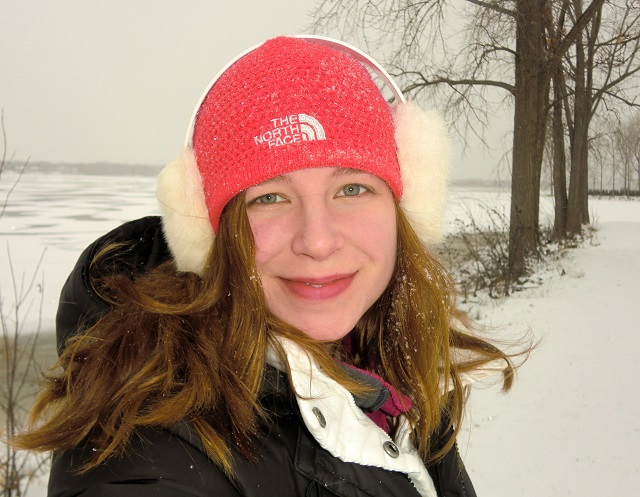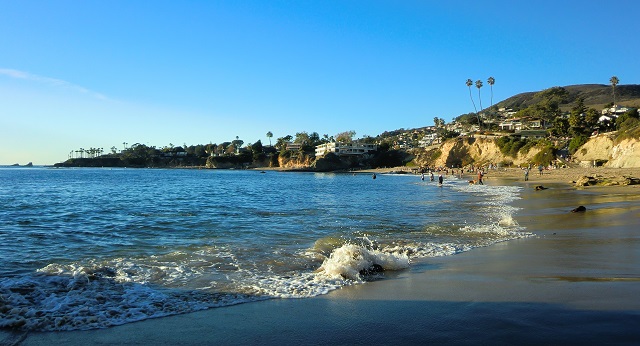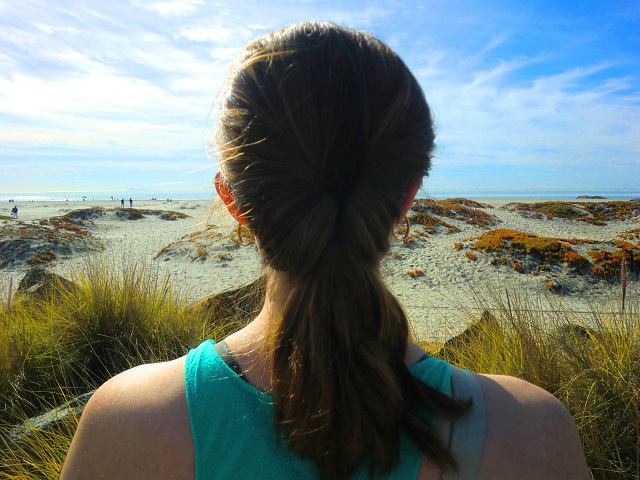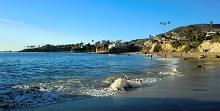
Melissa Lenker
Melissa escapes snowy Montreal for warm Laguna Beach.
Each semester’s end brings a flurry of hurried activity as undergraduates prepare for final exams and chug coffee like water. Life as a graduate student differs little; the end of my first semester of graduate school at McGill University brought my own personal marathon of work as I finished my water policy class, completed an initial report to The Nature Conservancy, and resubmitted a manuscript to a journal.
Our first report to The Nature Conservancy outlines the characteristics of Follensby Pond’s lake trout population in New York State’s Adirondack Park. The report includes initial lake trout growth models and population size estimates. Although we will continue to refine the estimates as we catch additional lake trout next May and October, the parameters serve as starting points to build an initial population model on which to test management scenarios. The Nature Conservancy recently published a great article on the Follensby lake trout research initiative, “Conserving Lake Trout Among the Philosophers.” Scroll down to the third picture to catch a shot of me holding a trap net!

Enjoying the snow before heading to California for winter break.
While I am fully engaged in lake trout research as a graduate student, I am still working to publish a paper concerning my undergraduate research at Cornell University about the seasonal variation of the amphibian fungal disease chytridiomycosis. This is my first foray into publishing, and I would be absolutely clueless without the help of the wonderful members of the Zamudio Lab at Cornell University.
Publishing a scientific article involves several steps, the first of which is picking the appropriate journal to display your original research. The most prominent articles are generally published in Science and Nature, widely considered the best and most influential journals. Manuscripts detailing the methodology and results of your research are submitted to a journal, and then distributed for peer review to two or three anonymous researchers in your field. Based on peer review comments, the editor in charge of your manuscript can either accept or reject your paper. Quite often the editor asks the author(s) to change several aspects of the paper and resubmit for consideration. Having been on both the receiving and giving end of reviewer comments, I feel that reviewers are truly trying to improve your paper by addressing what they feel to be inadequacies in the analysis and results. That being said, reviewer comments have a tendency to sting your pride.
Semester’s end brought me a brief work reprieve in the form of winter break. I am currently sitting at my parent’s kitchen counter in Laguna Beach, California, where unusually warm winter temperatures starkly contrast the Montreal’s icy chill. According to my laptop, temperatures have been dipping into -20ᵒF in Montreal at night. Yikes! I hope Sarah is also enjoying a bit of California sun before heading back to the chilly University of Groningen in the Netherlands.

A snowy December morning at McGill’s MacDonald Campus.
For Christmas I received two much awaited books: Four Fish: The Future of the Last Wild Food by Paul Greenberg and Tracks and Shadows: Field Biology as Art by Harry W. Greene. The first chapters of Four Fish have provided fascinating insight into the salmon industry and I cannot wait to reach the chapters about tuna, bass, and cod. This book is a must read for anyone interested in ocean conservation and the future of the world’s marine fisheries. Although I have not yet begun Tracks and Shadows, I cannot wait to start this combination of memoir and natural history written by my Cornell University herpetology professor Harry Greene.

Christmas Day in Laguna Beach, CA.
I only have a few more days left in California before my next semester at McGill starts in full swing. If only I could bring some of this weather with me.

Soaking up the California sunshine.







